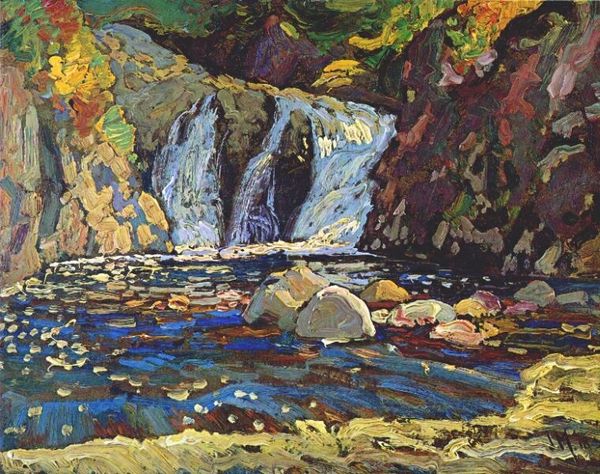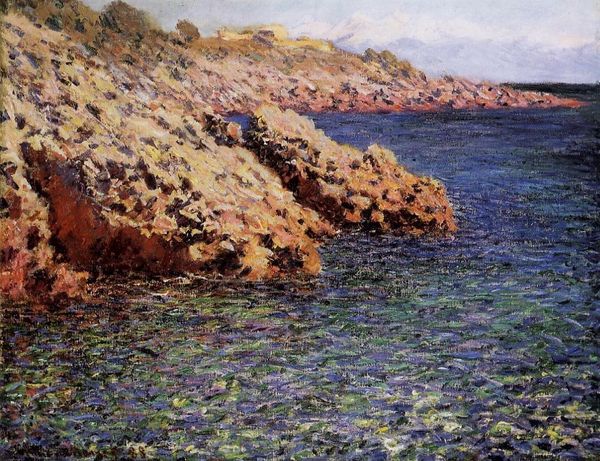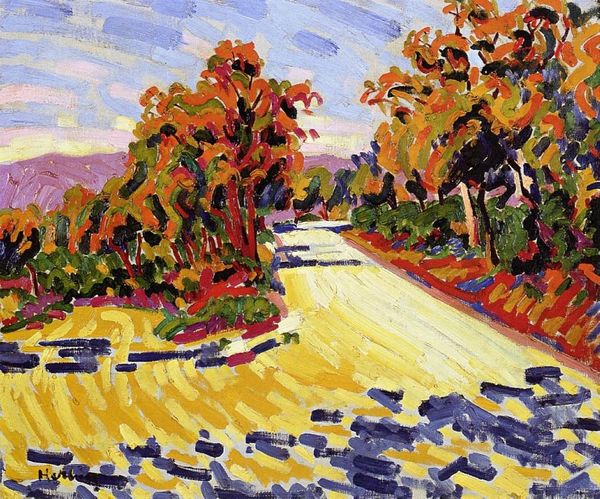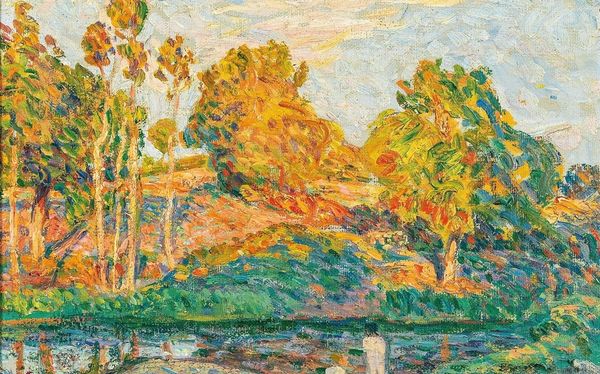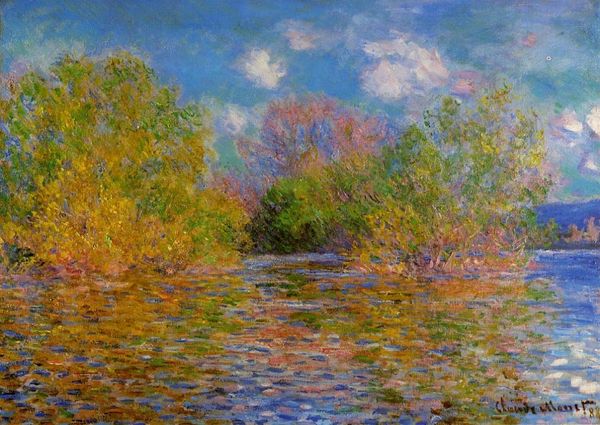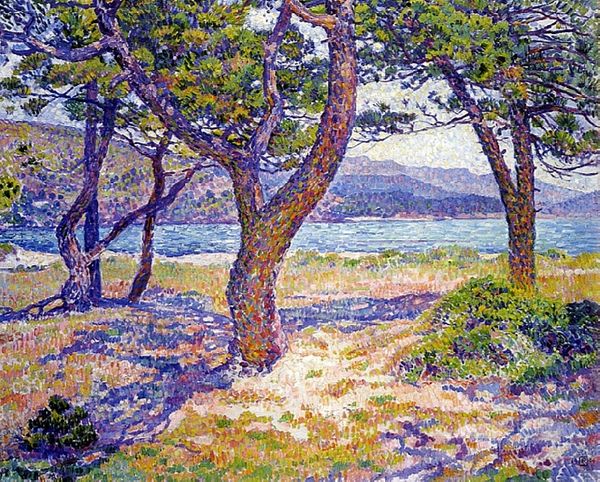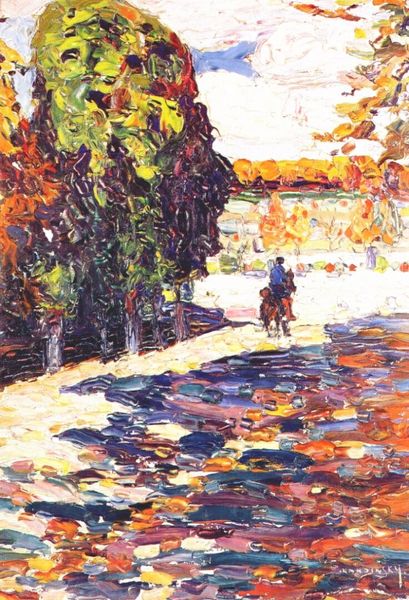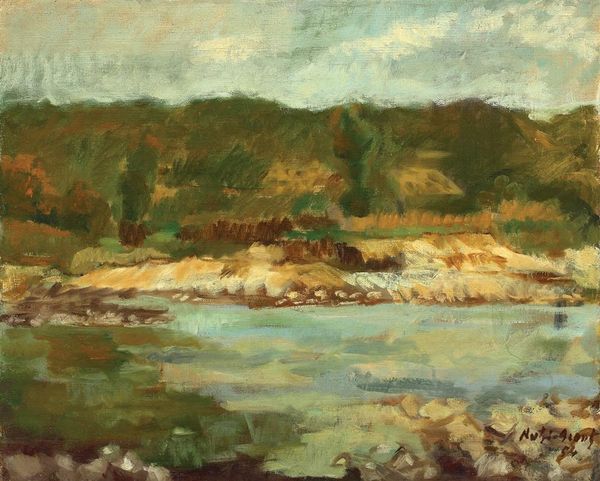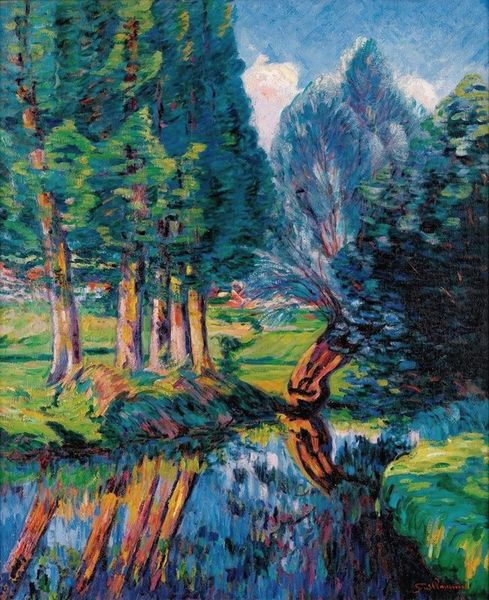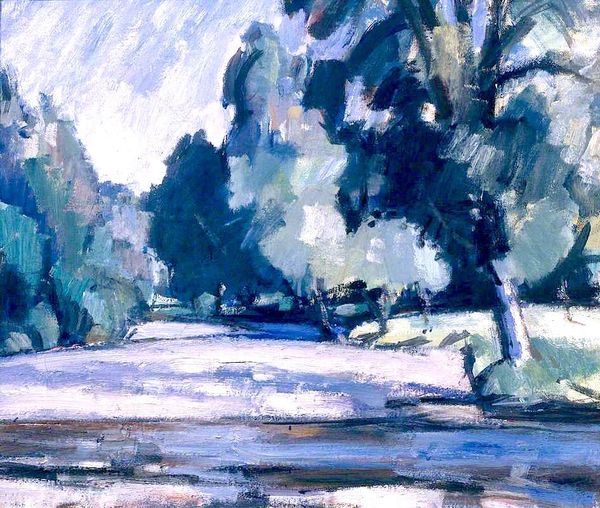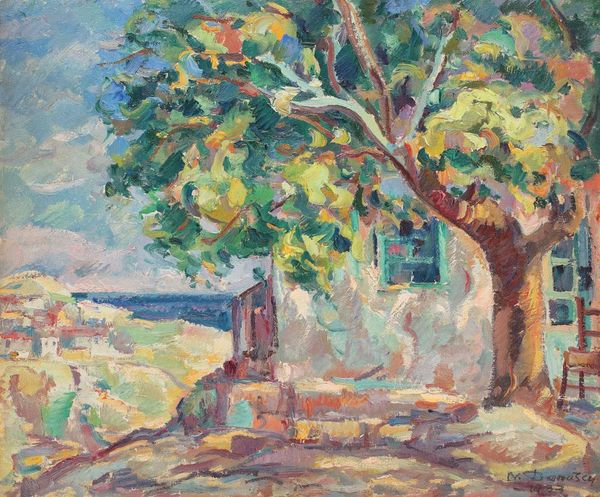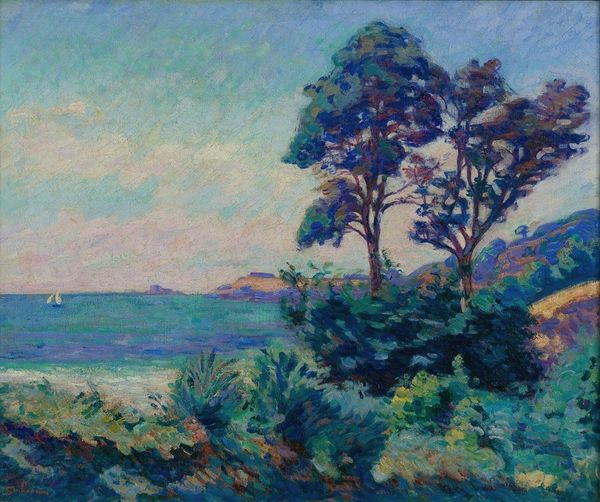
Copyright: Public domain
Editor: Here we have Alfred William Finch's "Porvoon Saaristosta" from 1900, done in oil paint. I'm really drawn to the vibrant colours and how they almost shimmer on the canvas, it feels so full of light. What do you see in this piece? Curator: I see a potent expression of national identity being forged through landscape. Finch, although of Belgian origin, was deeply involved with Finnish artistic circles at the turn of the century. He's not just painting a pretty scene; he's participating in a larger project of defining Finnish-ness. Look at how he uses Divisionism, breaking down the landscape into these individual points of colour. Editor: It’s interesting to consider how the technique itself plays into the expression. I guess I hadn’t thought about landscape as something that can convey identity. Curator: Exactly. Think about who has access to representing this landscape and whose stories are being told through it. Who *owns* the land? Are the vibrant colours a celebration, or could they also represent a kind of romanticized ideal that overlooks socio-economic disparities? Editor: So the painting becomes more than just a beautiful image; it becomes a statement about belonging, and maybe even a commentary on the relationship between identity, art, and nationhood? Curator: Precisely. Consider, too, that Finch later abandoned Divisionism for a more simplified style connected to applied arts. Why the shift? Was it a change in his own socio-political understanding? Editor: That gives me a lot to think about! I came in seeing light and colour, but now I see layers of meaning related to cultural identity and social context. Thanks for opening my eyes to it. Curator: And thank you for engaging with those complex layers! Hopefully listeners will contemplate their connection to land and culture too.
Comments
No comments
Be the first to comment and join the conversation on the ultimate creative platform.
